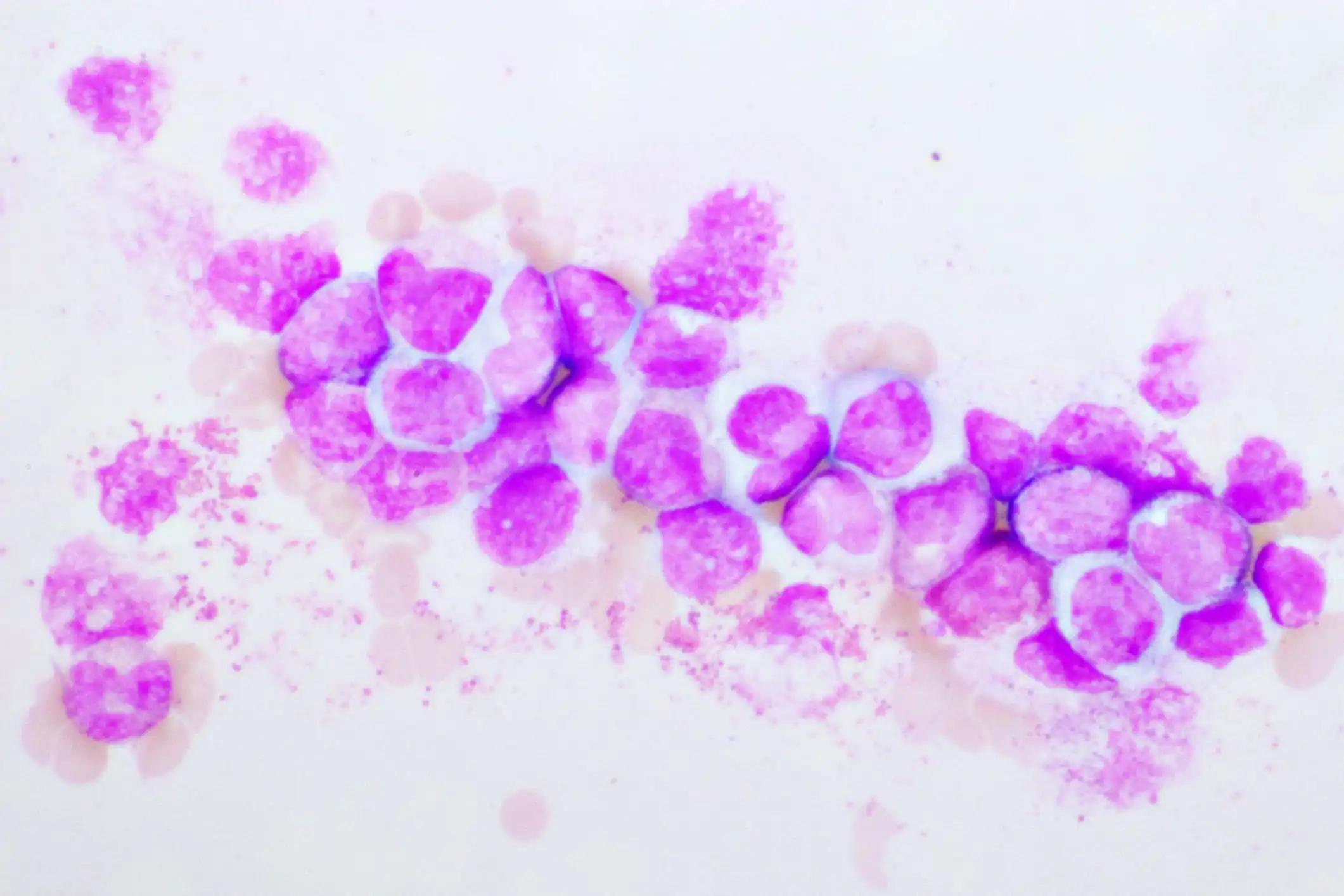KEY TAKEAWAYS
- The phase 3 randomized controlled trial ADMIRAL trial demonstrated that gilteritinib, an FLT3 inhibitor, improved OS in patients with relapsed or refractory FLT3-mutated acute myelogenous leukemia.
- The study evaluated the survival outcomes and relapse rates in patients who underwent HSCT in the ADMIRAL trial. Patients in the gilteritinib arm underwent HSCT more frequently than those in the chemotherapy arm (26% versus 15%).
- Patients who resumed gilteritinib after HSCT had a low relapse rate after pretransplantation CRc (20%) or CR (0%).
- The most common AEs observed with post-transplantation gilteritinib therapy were increased alanine aminotransferase level, pyrexia, and diarrhea, with grade ≥3 AEs related primarily to myelosuppression.
In the phase 3 ADMIRAL study, patients with relapsed or refractory (R/R) FLT3-mutated acute myelogenous leukemia (AML) had longer survival times after treatment with the fms-like tyrosine kinase 3 (FLT3) inhibitor gilteritinib. In the ADMIRAL trial, they analyzed the safety outcomes and survival rates of patients receiving gilteritinib maintenance medication after hematopoietic stem cell transplantation (HSCT). ADMIRAL included adults with FLT3-mutated R/R AML worldwide in a randomized controlled trial during phase 3.
Gilteritinib (120 mg/day) against preselected high- or low-intensity salvage chemotherapy was randomized (2:1) in patients with R/R AML who possessed FLT3 internal tandem duplication mutations in the juxtamembrane domain or D835/I836 point mutations in the tyrosine kinase domain (1 or 2 cycles). Participants in the gilteritinib arm who went on to get HSCT were eligible for post-transplantation gilteritinib maintenance therapy if they achieved composite complete remission (CRc) with effective engraftment no post-transplantation problems within 30 to 90 days after HSCT.
Only those receiving gilteritinib had HSCT-related adverse events (AEs) reported. Patients who had HSCT were evaluated for survival rates and cumulative relapse rates. Patients who had previously received a transplant but had to restart gilteritinib as maintenance medication afterward were studied for treatment-emergent adverse events. Overall, HSCT was performed on 26% of patients in the gilteritinib group (n = 64) compared to 15% of patients in the chemotherapy group (n = 19). All transplant patients had an OS rate of 68% at 12 months and 47% at 24 months. Post-transplantation survival was similar between the two groups, despite a trend towards improved OS after CRc before transplantation. Pretransplantation CRc (20%) or CR (0% relapse) patients who started gilteritinib following HSCT had a low relapse rate.
Increased alanine aminotransferase level (40%) was the most prevalent adverse event recorded with gilteritinib therapy after transplantation, followed by pyrexia (43%) and diarrhea (40%); grade 3 AEs were predominantly associated with myelosuppression. Acute graft-versus-host disease of grade III severity was uncommon, as was death. In the ADMIRAL trial, post-transplant survival was comparable across the 2 study arms, but better remission rates with gilteritinib made HSCT more accessible. Tolerability and safety of gilteritinib were well-established after transplantation, and recurrence rates were minimal. Our results suggest that individuals who are candidates for organ transplantation should get gilteritinib as a bridging therapy rather than chemotherapy.
Source:https://pubmed.ncbi.nlm.nih.gov/36526260/
Clinical trial: https://clinicaltrials.gov/ct2/show/NCT02421939
Perl, A.E., Larson, R.A., Podoltsev, N.A., Strickland, S., Wang, E.S., Atallah, E., Schiller, G.J., Martinelli, G., Neubauer, A., Sierra, J., Montesinos, P., Recher, C., Yoon, S.-S., Maeda, Y., Hosono, N., Onozawa, M., Kato, T., Kim, H.-J., Hasabou, N. and Nuthethi, R. (2022). Outcomes in Patients with FLT3-Mutated Relapsed/ Refractory Acute Myelogenous Leukemia Who Underwent Transplantation in the Phase 3 ADMIRAL Trial of Gilteritinib versus Salvage Chemotherapy. Transplantation and Cellular Therapy. doi:https://doi.org/10.1016/j.jtct.2022.12.006.



